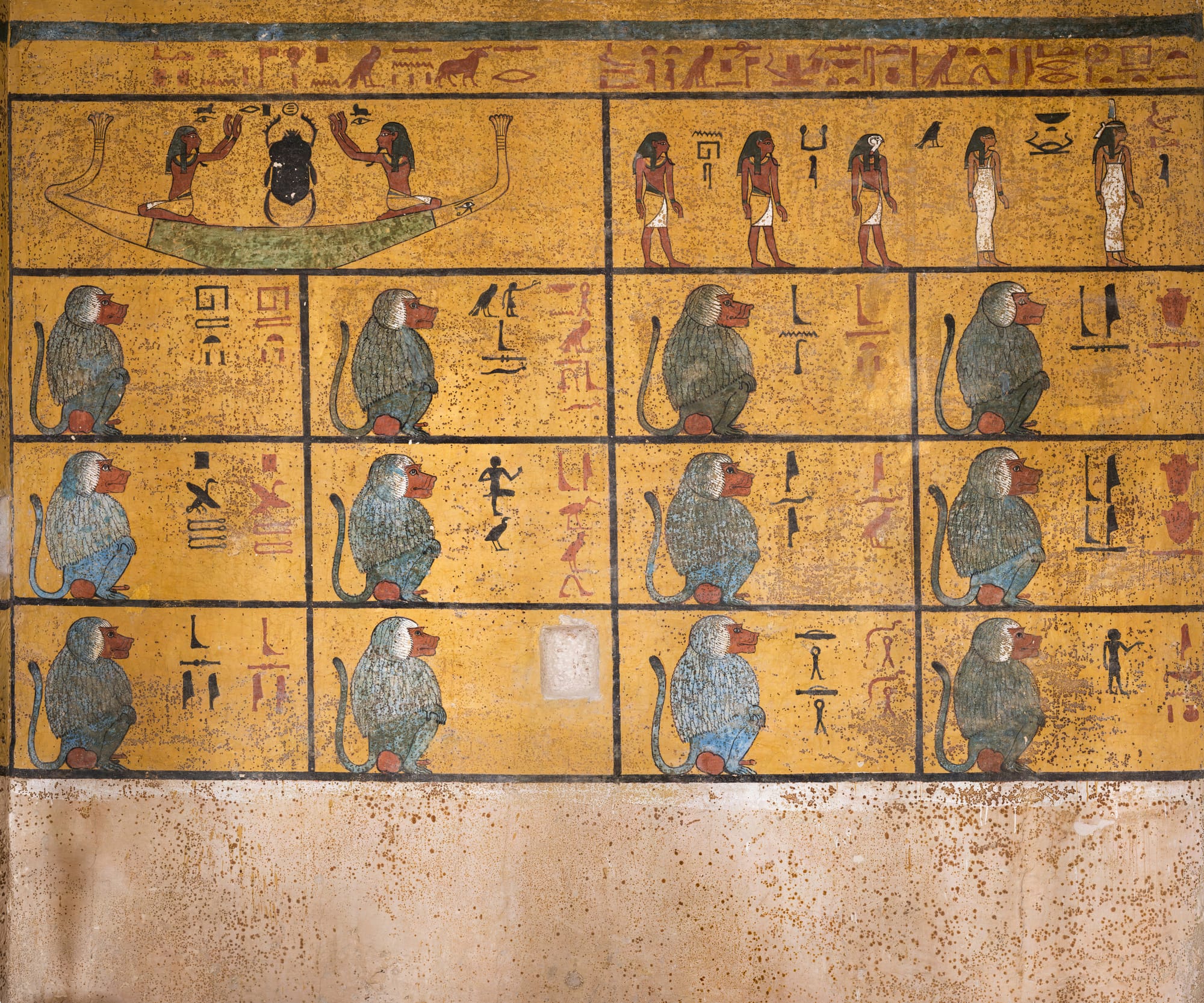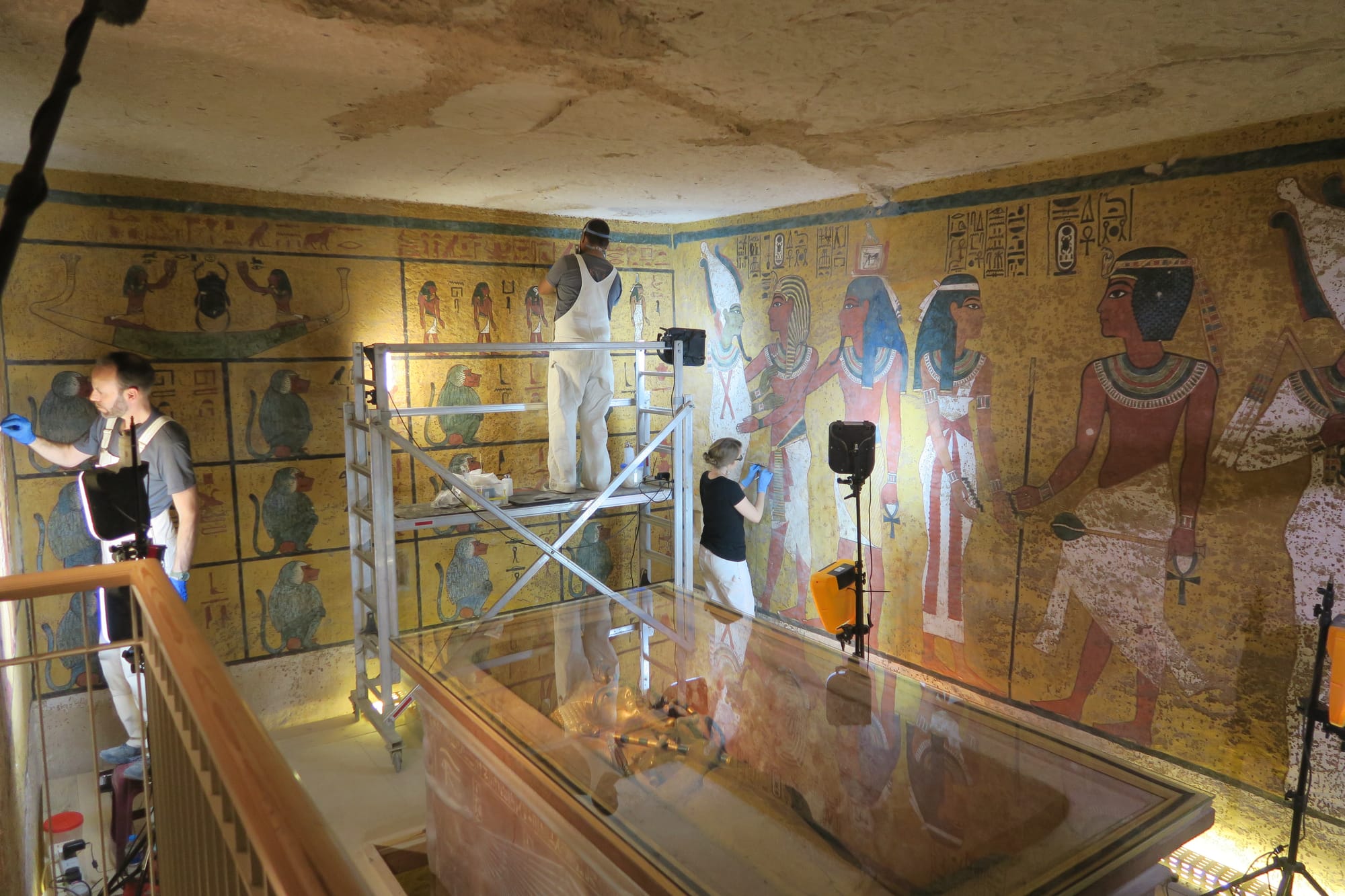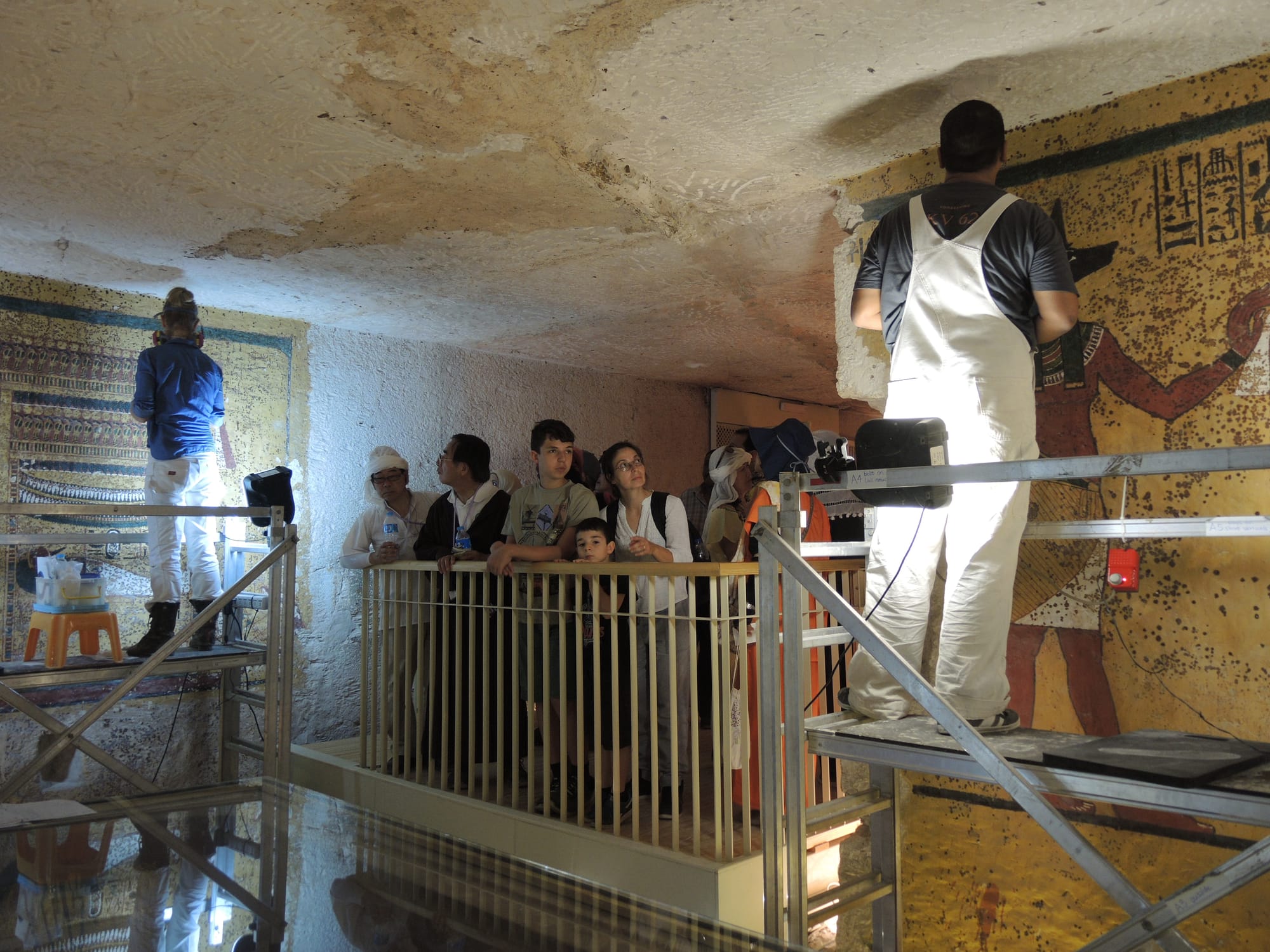The Restoration of the Tomb of Tutankhamen Is Complete
The Getty Conservation Institute and the Egyptian Ministry of Antiquities have completed a nearly decade-long restoration project of the 3,000-year-old tomb.

After nearly a decade of work, the Getty Conservation Institute (GCI) has finally completed its restoration of the Tomb of Tutankhamen in Egypt.
Since archaeologist Howard Carter discovered the 3,000-year-old tomb in 1922, millions of tourists have traveled to see its magnificent wall paintings, its quartzite sarcophagus, and the mummy of King Tutankhamen himself, displayed in an oxygen-free case in the burial chamber. But these visitors have brought with them dust and changes in humidity and carbon dioxide levels, which promotes microbiological growth. Conservators were concerned that mysterious brown spots on the painted walls were expanding. A thin veil of gray dust had settled over the tomb’s surfaces, which needed careful cleaning.

In 2009, with help from the Egyptian Ministry of Antiquities, the GCI brought in a team of environmental engineers, architects and designers to improve the tomb’s infrastructure, an Egyptologist to conduct background research, microbiologists to study the brown spots, and conservators to treat the walls. Together, they carried out the most intensive study and restoration of the tomb since Carter’s time.

To keep the tomb in good condition for generations to come, the GCI has devised a sustainable plan for its continued management. “Conservation and preservation is important for the future and for this heritage and this great civilization to live forever,” Zahi Hawass, Egyptologist and former minister of State for Antiquities in Egypt, said in a statement.
The tomb’s makeover included the addition of new barriers that restrict visitor access to delicate areas, improved signage and lighting, and the installation of a ventilation and filtration system to reduce the risk of future damage. Thanks to dust removal, the wall paintings — which depict King Tut, often called the “Boy King,” who was born around 1341 B.C. and ruled Egypt from age nine until his death as a teenager — have regained their brilliance.










